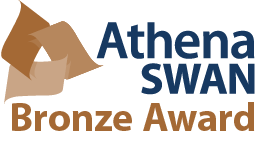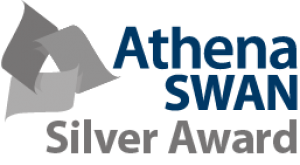You are here
- Home
- Dr Rachel McMullan
Dr Rachel McMullan

Professional biography
I completed my PhD in Biosciences at The University of Birmingham in 2003, studying the role of Rho small GTPases in keratinocyte function. Following this I undertook a postdoc at the MRC Laboratory for Molecular Cell Biology investigating the function of Rho family small GTPases during neurotransmitter release in Caenorhabditis elegans.
In 2010 I became a Wellcome Trust Career Development Fellow at Imperial College using C. elegans to study the relationships between the nervous and immune systems the mediate responses to infection.
I joined the School of Life, Health and Chemical Sciences in 2015 as a lecturer.
1999 BSc Biochemistry and Molecular Cell Biology The University of Birmingham
2003 PhD Biosciences The University of Birmingham
Research interests
Disgust
The constant risk of infection by pathogens has driven the evolution of behavioural adaptations in free-living animals that helps them to reduce pathogen contact. Such pathogen avoidance behaviours are observed across Animalia, from invertebrates to mammals. In humans, the emotion that serves to keep us away from sources of infection is disgust. This pathogen avoidance theory of disgust (PAT) is supported by strong correlations between disgust elicitors and pathogen sources. Given the many parallels between human disgust and pathogen avoidance behaviours in other animals we can begin to understand disgust through experimental studies of pathogen avoidance in animals.
Twin studies have shown that disgust sensitivity is heritable implying the existence of ‘disgust genes’. The nematode worm Caenorhabditis elegans is routinely used as a genetic model to dissect complex behaviours. We and others have established C. elegans as a cost-effective invertebrate model of disgust that can be used to determine the function of specific genes in disgust. This model provides a platform for further investigations into the evolutionary role of disgust in host defence.
Unravelling the genetic basis of disgust-related behaviour could have numerous practical benefits. Disgust can be leveraged to improve health and influence social behaviours. It may lead to new therapeutic approaches to disgust-related pathologies such as contamination-based obsessive compulsive disorder (OCD), some phobias including blood- injection-injury phobia and arachnophobia and trypophobia.
The effect of organophosphate exposure on neuronal function and its role in mood disorders
In collaboration with Dr Gini Harrison (Psychology)
Previous research has reported a link between exposure to organophosphate (OP) pesticides, mood disorders and suicidal behaviour. The mechanism through which OP exposure may result in mood disorders is unclear. Some researchers have suggested that they may also cause changes to serotonergic and dopaminergic pathways, which are systems involved in mood and stress regulation. Using behavioural assays in C. elegans we are studying how the long-term, low level OP exposure that has been associated with mood disorders affects neuronal development and function.
Selected Publications
2018
Sarabian, C. Curtis, V. and McMullan, R. Evolution of pathogen and parasite avoidance behaviours
Philosophical Transactions of the Royal Society B: Biological Sciences, 373, Article 20170256(1751)
2014
Anderson A. and McMullan R. From head to tail it's a two way street for neuro-immune communication Worm 3(3) e959425
2013
Anderson A, Laurenson-Schafer H, Partridge F, Hodgkin J, McMullan R. 2013, Serotonergic Chemosensory Neurons Modify the C. elegans Immune Response by Regulating G-protein Signalling in Epithelial Cells, PLOS Pathogens Vol:9(12), e1003787
Anderson A, Kang S, McMullan R, 2013, A simple method for quantifying M. nematophilum clearance from the rectal opening of C. elegans, Worm Breeders Gazette, Vol:19 (4), Pages: 15-16
Anderson A, McMullan E, 2013, A modified leaving assay to study pathogen avoidance, Worm Breeders Gazette, Vol:19 (4), Pages: 13-14
2012
Anderson A, McMullan R, G-proteins: Fighting infection on two fronts, Worm, Vol:1, ISSN:2162-4046, Pages:196-201
McMullan R, Anderson A, Nurrish S, 2012, Behavioral and Immune Responses to Infection Require G alpha q- RhoA Signaling in C. elegans, PLOS Pathogens, Vol:8, ISSN:1553-7366, Pages:e1002530-e1002530
Teaching interests
Currently teaching on the following modules;
SK320 Infectious disease and public health
S350 Evaluating contemporary science
Impact and engagement
I am currently the engagement and enterprise lead for the School of Life Health and Chemical Sciences, a STEM ambassador and Nuffield placement provider.
I have been a competitor in "I'm a scientist get me out of here" (2015) and presented at a number of science festivals including the 2018 Northen Ireland Science Festival (Yuck, that's disgusting) and the 2016 Cheltenham Science Festival ("The Disgust Instinct" with Valerie Curtis (London School of Hygiene and Tropical Medicine)).
I run a range of primary school outreach activities including 'how clean are your hands?' and 'yuck, that's disgusting'.
Find out more about my recent talk at RSC Science and the Assembly 2017 here
In 2017 I organising the Royal Society Evolution of Pathogen and Parasite Avoidance meeting. You can listen to the presentations here.
Papers accompanying the meeting were published in a themed issue of Philosophical Transactions of the Royal Society B in 2018

External collaborations
 Member Genie (Group of elegans new investigators in europe)
Member Genie (Group of elegans new investigators in europe)
Externally funded projects
Genetic analysis of post-developmental Rho GTPase signaling: identification and characterization of Rho signaling pathways required during the C. elegans immune response. (Transfer In)
| Role | Start date | End date | Funding source |
|---|---|---|---|
| Lead | 18 May 2015 | 31 Jan 2016 | WELLCOME Wellcome Trust |
Rho signaling has been extensively studied using biochemistry and cell-based assays that have demonstrated roles for Rho in many basic cell functions. These studies have told us a lot about the functions of Rho, however little about their importance in a whole animal. Rho signaling is essential during development making it difficult to study Rho’s role in adult animals. Analysis of adult Rho signaling pathways is important because aberrant signaling by these pathways has been implicated in human disease. In this study I aim to define the Rho pathways that act in adult animals. In particular I will identify those pathways that trigger changes in cell morphology as part of the C. elegans innate immune response. By identifying effectors important for this phenotype we will better understand Rho’s role in controlling cell morphology in adult animals. The innate immune system is evolutionarily conserved, for example, both Rho and MAPKinase function in the mammalian immune system and this is also true in C. elegans. In addition cross talk between Rho and MAPKinase pathways has been suggested to contribute to the action of oncogenic Ras. The molecular interactions that mediate this cross talk and Rho’s activation during the immune response remain poorly described and this phenotype provides a genetic model to dissect them. Defining these pathways and the relationships between them in C. elegans is likely to tell us more about how they are involved in innate immunity and misregulated in diseases such as cancer. | |||
Publications
Journal articles
Effectiveness of work-based educational interventions for antimicrobial stewardship: a systematic review (2024-12)
Langdridge, Darren; Virhia, Jennika; McMullan, Rachel; Banks, Duncan; Biard, Olivier; Charitonos, Koula; Alunyo, Jimmy Patrick; Kagoya, Enid Kawala and Olupot-Olupot, Peter
JAC-antimicrobial resistance, 6, Article dlae192(6)
Addressing Global Challenges By Contextualising Learning At Scale: Future Professional Learning For The Health Sector (2024)
Charitonos, Koula; McMullan, Rachel; Littlejohn, Allison and MacQueen, Hilary
Journal of Interactive Media in Education, 2024(1) (p 18)
Addressing the persistent disconnect between learning and work: Using a Logic Model to support negotiations of diverse actors during the design of digital learning systems (2023)
Littlejohn, Allison; Charitonos, Koula; Goshtasbpour, Fereshte; Dawadi, Saraswati and McMullan, Rachel
Learning Letters, 1, Article 7
The effect of the COVID-19 pandemic on disgust sensitivity in a sample of UK adults (2022-10)
Carr, Peter; Breese, Emily; Heath, Christopher J. and McMullan, Rachel
Frontiers in Public Health, 10, Article 1020850
Identification of a conserved, orphan G-protein coupled receptor required for efficient pathogen clearance in C. elegans (2019-04)
Anderson, Alexandra; Chew, Yee Lian; Schafer, William and Mcmullan, Rachel
Infection and immunity, 87(4)
Neuronal and non-neuronal signals regulate Caernorhabditis elegans avoidance of contaminated food (2018-07-19)
Anderson, Alexandra and McMullan, Rachel
Philosophical Transactions of the Royal Society B: Biological Sciences, 373, Article 20170255(1751)
Evolution of pathogen and parasite avoidance behaviours (2018-07-19)
Sarabian, Cecile; Curtis, Val and McMullan, Rachel
Philosophical Transactions of the Royal Society B: Biological Sciences, 373, Article 20170256(1751)
Activation of RHO-1 in cholinergic motor neurons competes with dopamine signalling to control locomotion (2018)
Essmann, C.; Ryan, R.; Elmi, M.; Byron-Dodd, K.; Porter, A.; Vaughan, A.; McMullan, R. and Nurrish, S.
PLoS ONE, 13(9) (e0204057)
From head to tail it's a 2 way street for neuro-immune communication (2014)
Anderson, A. and Mcmullan, R.
Worm, 3, Article e959425(3)
Serotonergic chemosensory neurons modify the C. elegans immune response by regulating G-protein signaling in epithelial cells (2013-12-12)
Anderson, Alexandra; Laurenson-Schafer, Henry; Partridge, Frederick A.; Hodgkin, Jonathan and McMullan, Rachel
PLoS Pathogens, 9, Article e1003787(12)
G-proteins: fighting infection on two fronts. (2012-10-01)
Anderson, Alexandra and Mcmullan, Rachel
Worm, 1(4) (pp. 196-201)
Behavioral and immune responses to infection require Gαq - RhoA signaling in C. elegans. (2012-02-16)
Mcmullan, Rachel; Anderson, Alexandra and Nurrish, Stephen
PLoS pathogens, 8, Article e1002530(2)
The Pseudomonas aeruginosa reference strain PA14 displays increased virulence due to a mutation in ladS. (2011-12-22)
Mikkelsen, Helga; Mcmullan, Rachel and Filloux, Alain
PloS one, 6, Article e29113(12)
The RHO-1 RhoGTPase modulates fertility and multiple behaviors in adult C. elegans. (2011-02-28)
Mcmullan, Rachel and Nurrish, Stephen J.
PLoS ONE, 6, Article e17265(2)
Rho deep in thought. (2007-11-01)
Mcmullan, Rachel and Nurrish, Stephen J.
Genes & Development, 21(21) (pp. 2677-82)
The Gα12-RGS RhoGEF-RhoA signalling pathway regulates neurotransmitter release in C. elegans (2006-12-13)
Hiley, Emma; Mcmullan, Rachel and Nurrish, Stephen J.
EMBO journal, 25(24) (pp. 5884-5895)
Rho is a presynaptic activator of neurotransmitter release at pre-existing synapses in C. elegans. (2006-01-01)
Mcmullan, Rachel; Hiley, Emma; Morrison, Paul and Nurrish, Stephen J.
Genes & Development, 20(1) (pp. 65-76)
Keratinocyte differentiation is regulated by the Rho and ROCK signaling pathway (2003-12-16)
Mcmullan, Rachel; Lax, Siân; Robertson, Vicki H.; Radford, David J.; Broad, Simon; Watt, Fiona M.; Rowles, Alison; Croft, Daniel R.; Olson, Michael F. and Hotchin, Neil A.
Current Biology, 13(24) (pp. 2185-2189)
Conference items
A putative C. elegans melatonin receptor is required for efficient pathogen clearance (2016-06-01)
Mcmullan, Rachel; Anderson, Alexandra; Chew, Yee Lian; Taylor-smith, Leanne; Schafer, William and May, Robin
In : European Worm Meeting (EWM 2016) (01-03 Jun 2016, Berlin) (p 168)
Other
Work-based learning interventions for antimicrobial stewardship: a systematic review (2023)
Langdridge, Darren; McMullan, Rachel; Virhia, Jennika; Banks, Duncan; Charitonos, Koula; Giri, Santoshi; Olupot-Olupot, Peter and Vaidya, Abhinav
PROSPERO, CRD42023447115
Tackling Antimicrobial Resistance through Professional Learning: The Development and Evaluation of the Global AMR Curriculum (2021-11)
Charitonos, Koula; Littlejohn, Allison; Dawadi, Saraswati; Mcmullan, Rachel; MacQueen, Hilary; Goshtasbpour, Fereshte; Ullmann, Thomas and De Munari, Paola
The Open University




